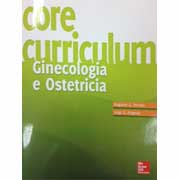48. Applicazione del condizionamento apneico del polmone per la prevenzione dell’insufficienza respiratoria
acuta neonatale ad un modello sperimentale primate.
Atti del Simposio Internazionale: Prevenzione e terapia della sindrome respiratoria grave del neonato.
Saint Vincent (AO) p. 32-38, 3 Ottobre 1988
( in coll. M. Solca, C. Farina, A. Marini, A. Ferrari, G.B. Candiani )
Summary: Apneic lung conditioning is an experimental approach to the prevenction of RDS in prematurity, wich consists of sustained inflation of the lungs to a pressure of 35 cm H2O, followed by a variable period on CPAP at 15-20 cm H2O while the experimental animal is maintained connected to the mother through an intact and functioning umbilical cord and placenta, to provide for gas exchange, particularly CO2 extraction. Previous studies have shown that in fetal lambs at 128-130 days gestational age (85% gestation) lung conditioning increases thoraco-pulmonary compliance: if it exceeded 0.2 ml (cm H2O) -1 kg-1 after 10 min. of such a CPAP, prevenction of RDS was assured in 96% of cases. In the present study we investigated the safety and effectiveness of the same technique when applied to a primate model, namely the fetal baboon at 140 (range 137-143) gestational age (75% gestation), which is reportedly equivalent to the 128-130 d gestation lamb in term of prevalence and severity of RDS. Out of 5 animals, only one (20%) exceeded the above limit in compliance[0.173 ml (cm H2O) -1 kg-1], while the others remained below this limit. That single animal, delivered and placed on mechanical ventilation for 24h, inproved global pulmonary function, while all other fetal baboons developed RDS. Our results suggest that lung conditioning can be safely applied to a premature primate model of RDS, and be effective in the prevenction of the disease, whenever lung compliance is raised above the same level found as critical in fetal lambs. However, the comparison of the two models no longer holds true in respect to the equivalence of RDS pathophysiology.
